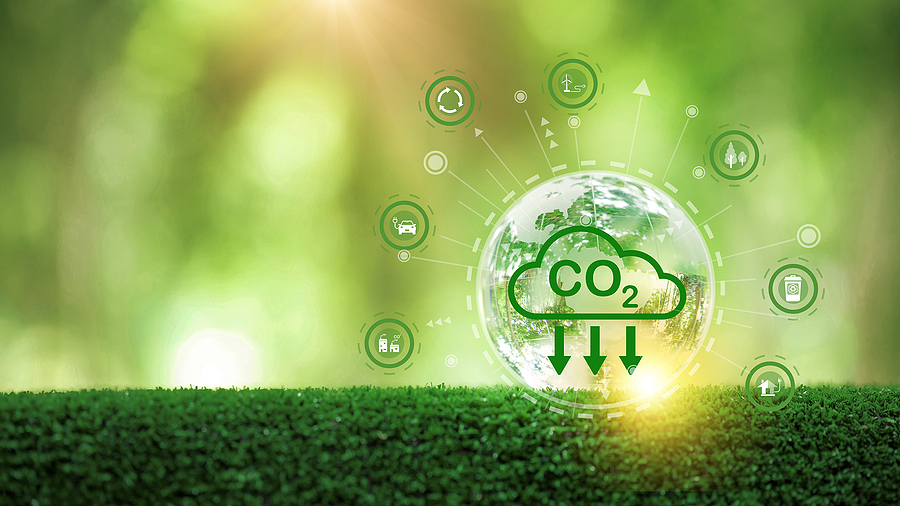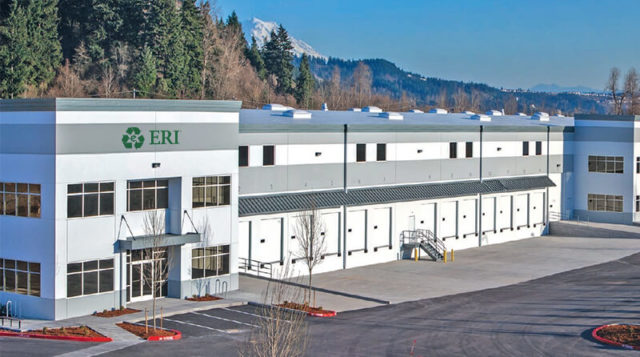
ESG Reporting Becomes Increasingly Vital
A McKinsey brief from 2022 found that ESG reporting has become an expectation for companies, as more individuals seek to work with organizations that place sustainability at the forefront of operations.
Similarly, even consumers are now obligating businesses to provide sustainable options regarding products and services. Investors have also taken notice of ESG and sustainability factors when deciding which companies to support.
Since its founding, ERI of Fresno, California has had a mission to advance towards a greener future. Over the past decade, the company has worked hard towards its goal of achieving zero-waste status.
The Largest ITAD Provider in the U.S.

ERI stands as one of the foremost companies in the United States to offer comprehensive IT, electronics asset disposition and cybersecurity-focused hardware destruction services. All operations are conducted under strict adherence to the highest environmental and data security standards and certifications.
With ERI, every type of electronic device can be de-manufactured, recycled, or refurbished in an environmentally responsible manner.
Setting a new standard for the industry, ERI is proud to have received SOC 2 certification for security and data protection. Boasting a capacity of over one billion pounds of electronic waste per annum, the company serves every corner of the United States with nine certified sites.
ERI’s mission is to “protect people, the planet and privacy”.
ERI and Time CO2 Unite
Last year, ERI embarked on a journey to reach carbon-neutral status by having net-zero carbon dioxide emissions. To accomplish this goal, the firm consorted with Time CO2 and its CO2.com platform based in New York City. Together, the team has been striving for carbon-neutrality.
CO2 partnered with ERI to create a climate action portfolio that was both impactful and diversified. This comprehensive initiative ensured the carbon offset efforts would be invested in projects that shared the same values and had been fully vetted.
To make this possible, CO2 enlisted the help of an experienced group of professionals from organizations like The World Economic Forum, Conservation International, The World Bank, Salesforce, Twitter, Amazon, Yelp and Time.
Reaching a major milestone, ERI has proudly declared that its operational emissions within the United States have achieved 100 percent carbon neutrality. Time CO2 assisted the company by implementing three main strategies: CO2 removal, emissions reduction, and protection of important carbon stores.
“We’re incredibly proud to have voluntarily taken this critical next step in our ongoing mission to protect the planet,” John Shegerian, ERI’s Chairman and CEO, states. “As a company that has had waste and emissions reduction in its very DNA since our start, and as ERI assists other organizations to achieve their ESG and sustainability goals through responsible recycling of e-waste, we felt it was essential for us to undergo the process of achieving official carbon neutrality to further enhance our own operational environmental impact.”
Growing a Sustainability Service
September 2022 marked the launch of Time CO2, a New York-based enterprise spearheaded by CEO and president of sustainability, Simon Mulcahy. Time CO2 opened its doors with the mission of providing companies with tailored climate action portfolios designed to reduce carbon emissions and finance climate-friendly activities.
“We went into COVID [and] realized every company really came face to face with realities about how they needed to operate to be effective,” Mulcahy commented. “First, of course, everyone has to be more digital than they thought. … But it also became very, very clear every company also had to be much more focused on science’s biggest problems and that the world was judging them on whether they were or weren’t doing that.”
The “chief priority is climate” he added.
“Every business had to focus on the digital and the sustainability side. There’s a lot of help on the digital side, but no help on the sustainability side,” Mulcahy explained. “That was the launching vision for CO2.com.”
CO2 Helps Small Organizations Reach Sustainability Goals, Too
Although large businesses may have the capability to retain a team of sustainability experts to reach ESG objectives, smaller enterprises that hope to curb their carbon footprint may find this less practicable, according to Mulcahy. “So, CO2.com’s job was let’s go find things that are hard to do but are imperatives for those companies and make it easy for them to do that and do so with a high order of confidence.”
Mulcahy asserts that carbon offsets are not simply the act of purchasing credits or planting trees, but rather CO2.com provides companies with real solutions to neutralize carbon emissions.
“The cheap way [to offset carbon emissions] is to find the cheapest offsets possible—you go to carbon markets and find the cheapest tons of carbon that you can buy,” he states. “Typically, what you’re doing there is investing in very low-quality climate action projects that are difficult to ascertain. We [at CO2.com] look at thousands of those projects every day.”
A “Curated Climate Action Portfolio”
Mulcahy explains that at CO2.com, customers can evaluate the climate action projects they wish to invest in, and have a customized portfolio built for them. Upon completion of this process, clients are given access to a climate impact dashboard which provides metrics on how well the campaigns are performing.
“We make sure. So, when you talk about it in an annual report and to investors and employees or customers, you can guarantee you are doing the best you can to have the greatest impact of every dollar spent on climate,” Mulcahy says.
Time CO2 has collaborated with nearly a dozen businesses from both the U.S. and Europe, ranging numerous industries, to guarantee its new platform performs optimally and meets customer needs. He further explains that ERI was one of the first companies Time CO2 partnered with.
Last fall, Mulcahy was featured on Shegerian’s Impact Podcast. After the episode was finished recording, Shegerian reached out to Mulcahy about a possible alliance with CO2. Subsequent conversations resulted in an agreement to work together, in hopes for ERI to acquire carbon-neutrality.
Carbon Neutral Status Achieved
Since it was founded, ERI has been striving to cut down on its operational emissions. However, it wasn’t until Mulcahy joined Shegerian on the podcast that he realized the extra steps which could be taken to reach carbon-neutral status.
“Just because we’re doing what we feel is a noble thing and have a great mission of recycling electronics, there’s so much more we can be doing to get to carbon neutral to make the world a better and greener place,” Shegerian stated.
He added that ERI has committed itself to evaluating its sustainability initiatives over the last few years. To measure the progress they have made towards a circular economy, the company has collaborated with the United Kingdom-based, Ellen MacArthur Foundation, utilizing its Circulytics tool.
Circulytics Tool Proves to be Instrumental
The Ellen MacArthur Foundation’s Circulytics tool provides invaluable insight into the circularity of a company. It considers not just products and material flows, but all aspects of the business. This allows the tool to identify where a company is excelling in terms of sustainability, as well as areas for improvement.
In 2021, Circulytics awarded ERI an ‘A-‘ grade on its scorecard. In response, ERI started to explore options that would help it become more energy efficient. This included a reduction in electricity consumption within corporate offices, and forming relationships with vendors who produced energy-saving products. As a result of these efforts, the following year ERI achieved an ‘A’ grade from Circulytics.
Shegerian says that ERI is currently working towards furthering its efficiencies by assessing its logistics, lighting, water consumption and even the vehicles used by staff members. As an additional step to reduce the organization’s carbon footprint, he mentioned that ERI has plans to install solar panels on the rooftops of company sites in California.
Shegerian articulates, “At ERI, our emissions are coming mostly from our shredders and our trucks, so while we made improvements on lighting and forklifts and more, the biggest improvements we’ve made have been our efforts to locate facilities as close to our clients as possible and maximize the amount we fit on trucks so that we’re reducing truck traffic and our efforts to shift shredding operations to off-peak hours. Moving forward, those continue to be areas we focus on heavily.”
ERI Sets Sights on a Zero-Carbon Footprint
Shegerian has reported that ERI is collaborating with CO2.com to fill any gaps and to award carbon credits towards climate action projects, aiding ERI to reach a zero-carbon footprint. “[CO2.com figures] out what your missions are, and then they go out to the marketplace and they find the projects and they buy the projects that offset those emissions,” Shegerian states.
ERI has taken a major step towards sustainability by achieving carbon-neutral status, but according to Shegerian, sustaining it is an ever-evolving process.
“We’re proud of our achievements, but we’re not done. We know we can continue to do more at our facilities to be even better. We’re looking at expanding the electrification of our fleet, facility renewables and more efficiency projects. As we continue to grow as an organization, we want to keep our climate impact from growing with us.”
Leading by Example
ERI’s efforts to attain carbon neutrality could be a source of inspiration for other environmental services organizations, according to Shegerian. His advice to such companies is that they should begin by assessing internal operations before searching externally for partners to reduce their carbon footprint.
“Hopefully, we can inspire others in environmental services to do more where they are, as well, because we all are sharing this planet together,” Shegerian describes. “And if we all do our part, it’s a clean place for all of us, our kids and our grandkids. And that’s what we’re here for—to be servants to our families and to the planet. We’re going to keep on this journey culturally, financially, and secondarily, we’re going to keep reporting on it publicly.”
“There is no finish line in the world of sustainability – we can all always do more.”
